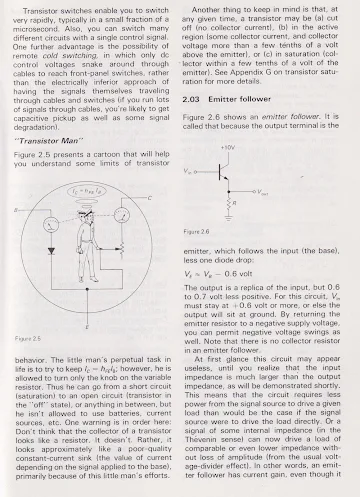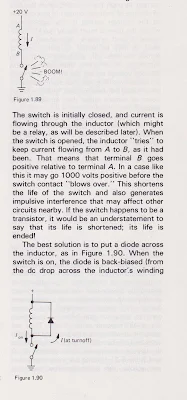First, the Knack Story. Andy CO2AFV clearly has The Dilbert Disease:
Hello my name is Andy. I had an interest in Ham radio before knowing that existed. While I was a child my entertainment was building quartz oscillators that later I tried to receive on neighbors' and friends' radios. One day I succeeded in modulating two of them and I finally established a conversation with a friend about 200 meters from my home!!!
Andy with his FB HB rig
Here's a description of a version of the 7 MHz Jaguey transceiver that Andy built during the pandemic. It looks to me as if he took the Jaguey DSB rig and added a 455 kHz filter with an additional mixer to turn it into an SSB rig. So he is generating the SSB at 455 kHz, and mixing it with a VFO running at around 6.8 MHz. The sum output would put you in the 40 meter band; the difference output at around 6.35 MHz could (mostly) be knocked down by a bandpass filter. I think the Cuban Radio Federation Web Site gets it a bit wrong -- the purpose of the filter is probably to eliminate the unneeded sideband, not really to suppress parasitics.
Federation of Radio Amateurs of Cuba Published: September 17, 2020 Viewed: 2352 Comments: 12
Radio Transceiver CO9BIA 455 A construction carried out in times of Pandemic by its author, Andy Fernández Valdespino (CO2AFV).
Cuban radio amateurs continue to accept the challenge of isolation caused by the incidence of COVID-19, but this does not mean they paralyze their activities. Such is the case of Andy Fernández Valdespino (CO2AFV), who for more than four months has been working on the development and construction of a new transceiver, the CO9BIA 455, a device that already works perfectly in the 7 MHZ Band.
Andy, who is technical secretary of one of the Havana Radio Clubs, has to his credit the construction of two Jagüey-type radio models, as well as several types of interfaces for programming and Digital Modes; and various prototypes of antennas, among other elements that make up its constant “cacharreo” activities, as we say in our language.
He has now completed and tested a new model that he has named with the callsign of his Radio Club, CO9BIA, and the model 455 is due to the use in this prototype of a filter of the same capacity. Asked about the details and other construction bases of this radio, whose transmission and reception tests using only outputs from the driver were carried out on September 14, Fernández Valdespino pointed out that his objective was to build a portable QRP equipment, of very large proportions. small, that it would be capable of being operated in the 40 meter band on both sides, by incorporating an improved VFO from the traditional Jagüey, but this with some modifications, and that the radio in question would work powered by a 7-inch battery. .2 volt, the same ones that come with most of the “Handy” used by radio amateurs.
To complete the “portability” characteristics of the new radio, the possibility of exchanging antennas has been incorporated, and a very light variant of the telescopic type can also be used, just over one and a half meters long. Andy explained that for the development of the new equipment, he was based on studies that he has been doing on some of the characteristics of the Jagüey, a direct conversion radio with very good sensitivity, but that does not have good selectivity, so in the conditions of the current solar cycle, its behavior is not optimal. In Jagüey, the signals, after being modulated, do not pass through any band-pass filter, which causes many “spurious” signals to be released into the ether, which represents an obstacle to be solved in order to incorporate a linear that can increase its output power. All of this, the creator assures, was taken into account for the construction of this new design. For example, in the transmission step, in the CO9BIA 455, the microphone signal is mixed, pre-amplified, filtered and re-amplified, until it is delivered to the 455 kHz filter, to finally be mixed with the VFO signal; and as a result of these steps, the sum and subtraction of these mixtures is obtained, which are in the order of 6 and 7 MHz. As a final result, after these signals are injected into the input bandpass filter, only one output is obtained of 7 MHz, whose operating segments are carried out through the use of the improved VFO. Given these characteristics, with which spurious signal outputs are reduced or eliminated, in this new radio it is feasible to add a linear that can raise the power to approximately 7 watts, which would adjust to the power conditions described above.
This experienced “clunker” says that for the development and construction of this transceiver, three fundamental aspects were combined: the first, applying the experiences of having built other radio models, to ensure that the new prototype could be built by any radio amateur. with minimal knowledge of electronics, using recycled components and materials. Secondly, he used and adapted parts of the construction schemes of a radio project called LU3DY, from the Argentine Radio Club “Almirante Brown”; and finally, the adaptation of some parts of the traditional Jagüey, such as the VFO board and circuit. Although, as already explained, the radio works,
Andy Fernández is immersed in the construction of a small linear amplifier similar to the ARARIHNA project, by a Brazilian radio amateur, as well as making final adjustments to what is already a reality: the conclusion and final adjustments of the new CO9BIA 455 Transceiver, a portable QRP device for the 40 meter Band, developed in these times when we must all stay at home, to protect ourselves from COVID-19.
By Luis Enrique Estrada Hernández (CO2BK) FRC Information System Coordinator
The VFO Board
Here is the web site of the Federation of Cuban Radio Amateurs that describes Andy's work:
And I learned a very useful Spanish word through this: "Cacharreo" is a Spanish word that means to tinker with something in an attempt to fix, mend, or improve it.
Thanks Andy! And thanks to Trevor for alerting me to this great project.






































































